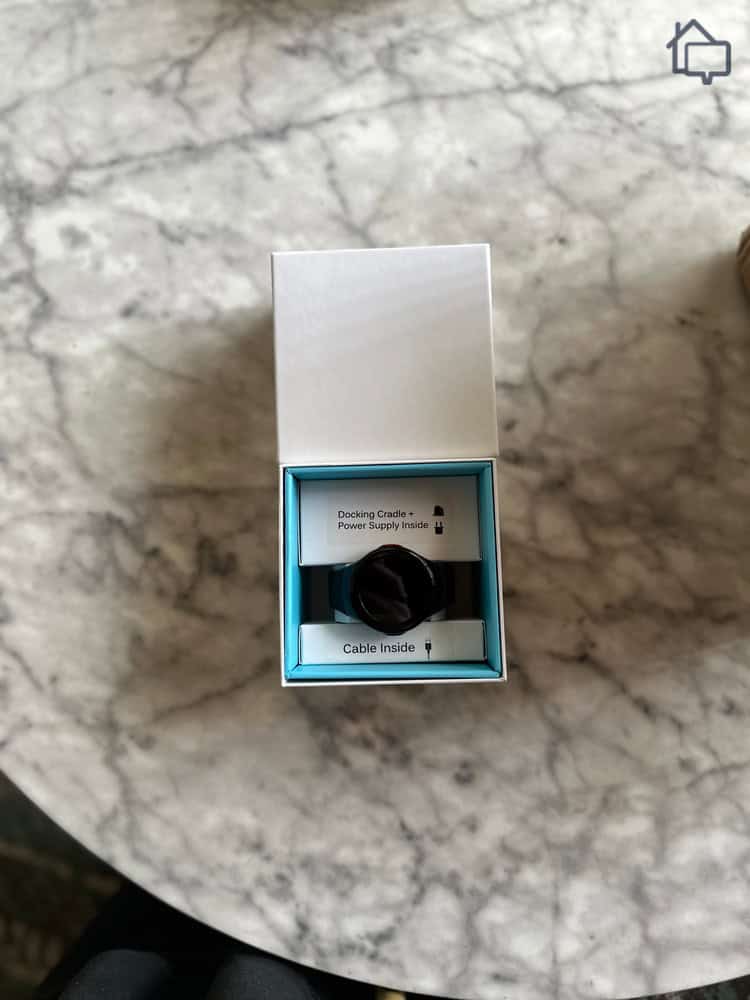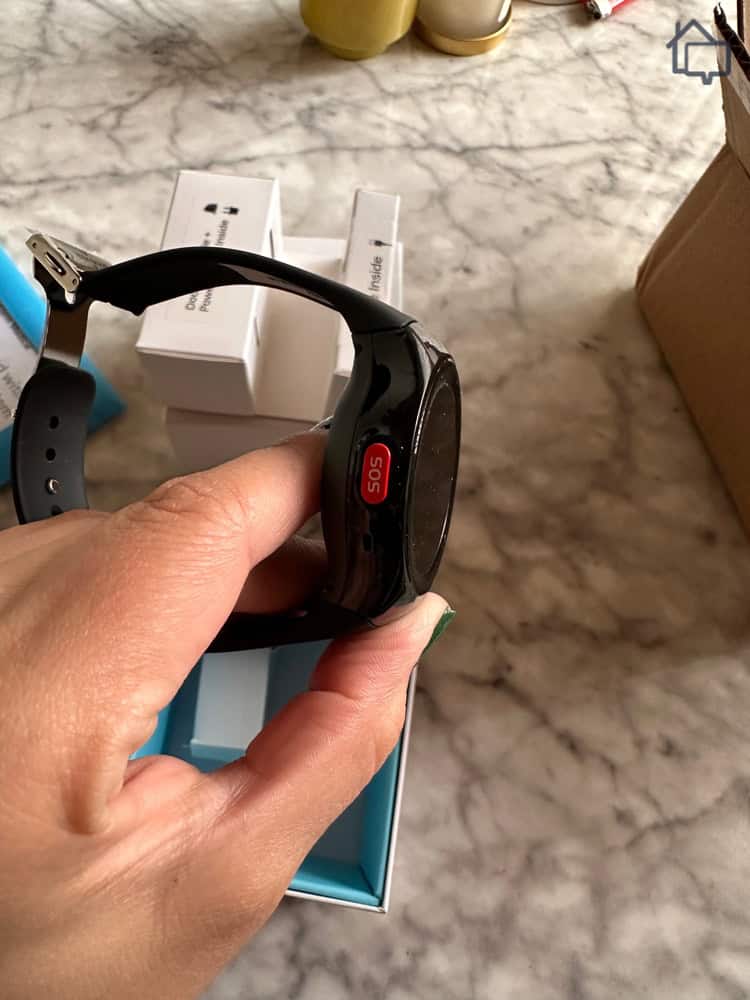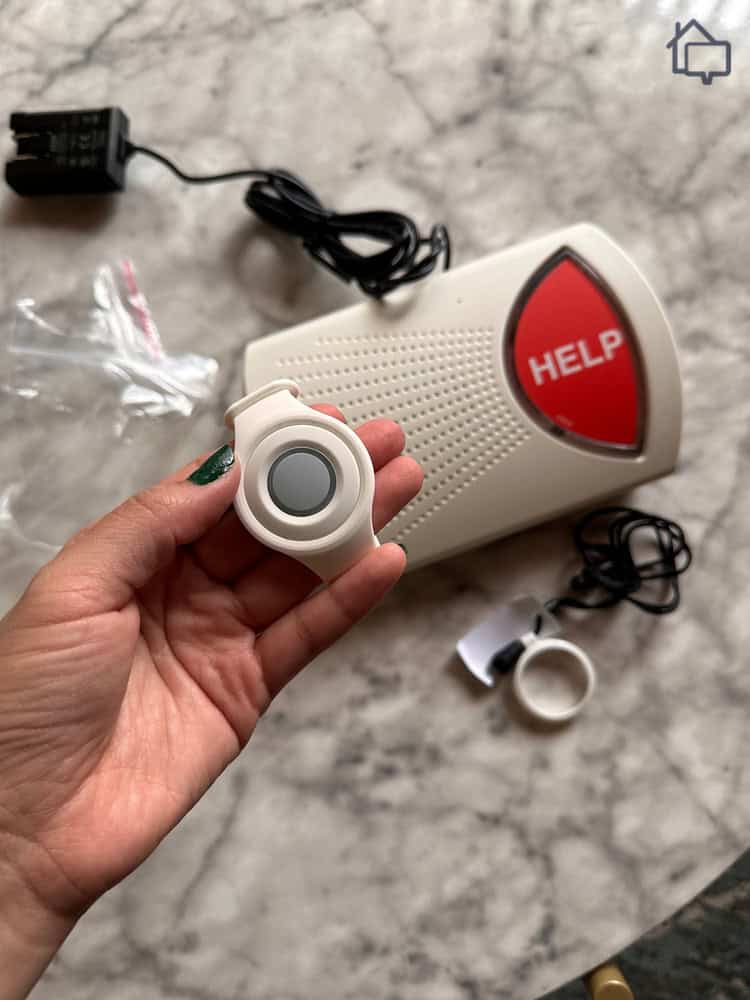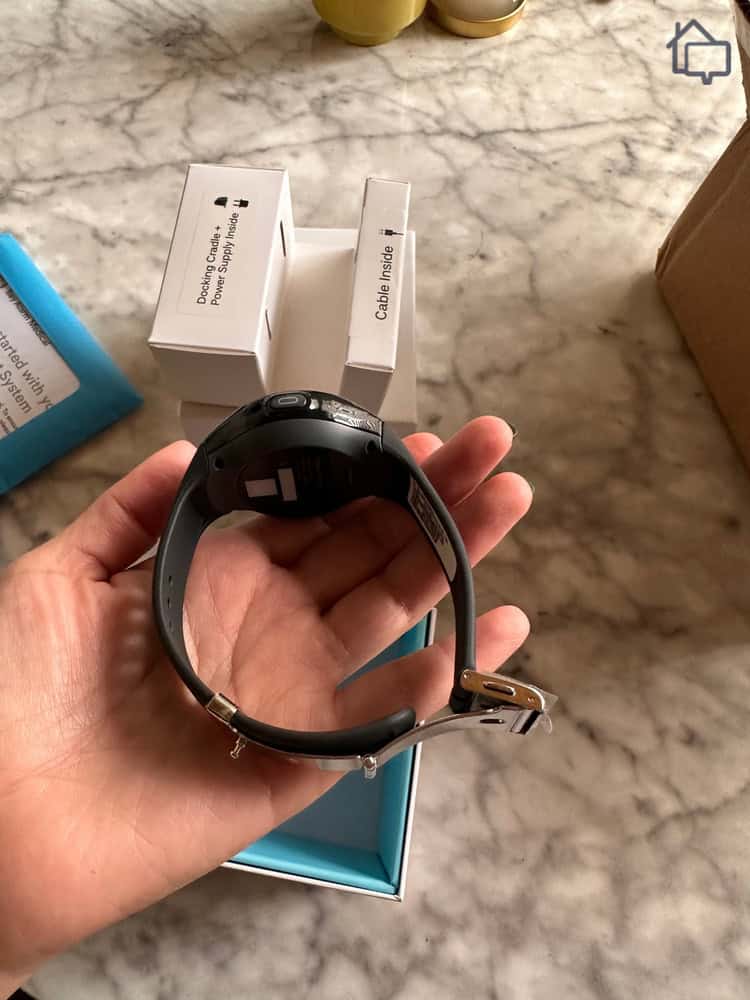SafeHome.org may receive compensation from some providers listed on this page. Learn More
We may receive compensation from some providers listed on this page. Learn More
SafeHome.org may receive compensation from some providers listed on this page. Learn More
We may receive compensation from some providers listed on this page. Learn More
We tested the Bay Alarm Medical SOS Smartwatch and found that it offers good value, but lacks premium features.
Bay Alarm offers a number of great medical alert packages and plans, each one designed to protect seniors in a different way. Our favorite? Bay Alarm’s SOS Smartwatch.
Bay Alarm certainly didn’t invent the smartwatch, but smart watches were originally engineered with health and fitness in mind. No surprise, then, when Bay Alarm realized smartwatches also make for stylish medical alert devices.
When we tried out the SOS Smartwatch recently, we were impressed both by how responsive this device was to our health needs and how many built-in conveniences it included.

Bay Alarm Medical smartwatch in box
Pro Tip: Check out our list of the best medical alert systems to compare Bay Alarm’s devices against some of the most well-known and trusted brands in the industry.
Are there downsides to the SOS? Sure. Automatic fall protection costs extra and the battery life is shorter than some competitors’. Ultimately, though, the device does its job effectively. It provides on-the-go protection, and it’s stylish and convenient. We’d recommend it for any active seniors who want peace of mind while keeping their independence.
Bay Alarm Medical has a long track record of keeping older adults safe, and the SOS Smartwatch fits right in. It keeps things simple with a side SOS button you can press for immediate help, plus optional fall detection that calls for assistance if you can’t.
Most medical alert systems offer those basics, but the smartwatch stands out for its portability. You can wear it anywhere, and if you press the SOS button, you’re connected to Bay Alarm’s monitoring team through the watch’s two-way speaker. They can also send help straight to your location using built-in GPS.
It’s a smartwatch, but it’s not trying to compete with an Apple Watch or Samsung Galaxy. It’s designed for safety first. Even so, it looks good on the wrist and includes a few handy smartwatch features.

Holding the Bay Alarm Medical smartwatch
Needless to say, the SOS Smartwatch costs a lot less than an Apple Watch. Like we said, though, it’s more apt to compare the SOS Smartwatch with other on-the-go medical alert systems. So, here’s how it compares to the SOS All-In-One 2, SOS Micro, and Medical Guardian’s MGMove.
| SOS All-In-One 2 | SOS Micro | SOS Smartwatch | Medical Guardian MGMove Smartwatch | |
|---|---|---|---|---|
| Battery life | 72 hours | 36 hours | 16 hours | 24 hours |
| Can be used at home | Yes | Yes | Yes | Yes |
| GPS location tracking | Yes | Yes | Yes | Yes |
| Wi-Fi location tracking | Yes | Yes | Yes | Yes |
| Fall detection | Yes (optional add-on) | Yes (optional add-on) | Yes (optional add-on) | Yes (optional add-on) |
| Monthly fee | $44.95 (with fall detection) $34.95 (standard) |
$44.95 (with fall detection) $34.95 (standard) |
$49.95 (with fall detection) $39.95 (standard) |
$42.95 |
| One-time equipment fee | $149 | $149 | $199 | $200 |
The $199 price isn’t pocket change. That’s $50 more than Bay Alarm’s other mobile options like the All-In-One 2. Plus, the monthly monitoring adds another five bucks to your bill.
In addition, we should point out that the Bay Alarm SOS Smartwatch costs exactly the same as Medical Guardian’s MGMove, but you’ll save about $100 compared to premium options like the UnaliWear Kanega Watch at $299.
Bay Alarm offers each package in two versions: the standard plan or one with fall detection for an extra $10 a month. That upcharge is common across the medical alert industry. Fall detection can be a lifesaver for some seniors, but not everyone needs it. By keeping it optional, Bay Alarm lets you pay only for the added protection if it makes sense for you.
Pro Tip: If fall detection is a priority for you, check out our list of the best medical alert systems with fall detection to see how Bay Alarm stacks up against the competition.
If you choose the smartwatch, you can add the 360° Bundle for an extra $25 a month. This upgrade gives you an in-home system alongside the watch, so you’re protected both at home and on the go. It also comes with helpful accessories like a lanyard, a wearable emergency button, and a wristband. And just like with any Bay Alarm plan, you can add fall detection if you want the extra safety.

Holding extra pendant for Bay Alarm Medical home device
Here’s an overview of the add-on equipment Bay Alarm Medical offers.
| Add-on equipment | Cost | Features and functionality |
|---|---|---|
| SOS Smartwatch With Fall Detection | $49.95 per month |
|
| SOS Smartwatch 360° Bundle | $64.95 per month |
|
| Additional charger | $49 |
|
| Lock box | $30 |
|
| Vial of Life kit | $8 |
|
| Warranty plan | $2.95 per month |
|
If you’re looking for the capabilities you’d get from an Apple Watch or Samsung Galaxy Watch, the SOS is going to disappoint. Nevertheless, we found it came with a number of handy extras. It still has some smart watch features, including:
The SOS may not be as smart as an Apple Watch, but it comes with useful features aimed at keeping seniors safe. It also costs less than you’d pay for a regular smartwatch. It offers solid protection and convenience for the money.
Did You Know? Tracking your steps could save your life. Older adults who walk at least 3,867 steps per day reduce their risk of death from any cause.1 You can use the SOS Smartwatch’s step tracker to make sure you’re getting enough movement each day.
Features and specs offer one way of getting to know a medical alert device. Let’s talk a little about the experience of buying and using the SOS, though. We wore it for over two weeks. What was it like living with the Bay Alarm system day-to-day?

Holding the Bay Alarm Medical smartwatch
Bay Alarm Medical makes the buying process simple. The pricing page lays out all your options, and as you move through the four steps, your total updates in real time. Once you pick your system and add-ons, you create an account, check out, and wait for delivery.
For our SOS Smartwatch with fall detection, we chose from monthly, quarterly, and annual billing. Since Bay Alarm doesn’t offer big upfront discounts—just free shipping with quarterly plans and a free month with annual—we stuck with the monthly option. Customizing the kit was easy, too. We selected our wristband size and added a lock box and Vial of Life kit to help first responders access our home and understand our medical needs.
The only downside was shipping speed. Bay Alarm estimated four to six business days, with no expedited option. Ours arrived in about a week, which is standard for the industry but may feel slow if you need coverage quickly.
Pro Tip: If the Bay Alarm Medical smartwatch doesn’t have you convinced, check out our review of the best medical alert systems worn as watches. Surprisingly, the Apple Watch landed on our list, but you’ll have to read the article to find out why.
Before we did anything else, we plugged our SOS in to charge. The device came with a minimal charge, but we wanted to make sure it was full of juice before we put it through its paces. No problems there: the charger plugs into any standard outlet.
We need to talk about the elephant in the room: battery life. The SOS Smartwatch only lasts six to eight hours between charges. Most competitors last 16 to 24 hours. There are even mobile pendants that can last up to 10 days. You’ll make it through a doctor’s appointment or lunch with friends, but you’ll need your charger for a full-day family reunion.
Bay Alarm Medical’s customer support operates during business hours, which can be limiting for those with busy schedules. You can reach them by phone, email, and chat. However, each method has specific availability windows. If you work full time, you might need to send an email and wait for a response.
Pro Tip: Use our medical alert system buying guide to find out what you should look for in a device. It covers the features to consider, average cost breakdowns, company reviews, and what equipment is best.
It’s important to distinguish between customer support hours and emergency monitoring. The 24/7 emergency call center, which is what really matters in a crisis, operates around the clock. In our testing, the emergency center had impressive response times and the team was professional, clear, and reassuring.
Upon arrival, the battery for the SOS Smartwatch was mostly charged, at 85 percent, so we were able to start setting it up right away.
Since we put in our medical information when buying the smartwatch, we didn’t need to re-enter it.
When we pressed and held the SOS button for five seconds during our test, it took just 16 seconds to connect with Bay Alarm’s monitoring center. That’s pretty impressive. Most competitors we test take up to 50 seconds to connect. The $299 UnaliWear watch we mentioned earlier took over a minute.
FYI: Most monitored on-the-go medical alert systems come with GPS.
The fall detection really impressed us. We tested it repeatedly over a week, and here’s what’s cool: it actually learns your movement patterns. The more you wear it, the better it gets at distinguishing between you flopping on the couch versus an actual fall. By day seven, it was spot-on with its detection.
The Bay Alarm Medical SOS Smartwatch works with the standard Bay Alarm mobile app. It’s a caregiver app that allows authorized users to manage your account, check in on your location, and receive alerts if you press the SOS button. We found the app straightforward and easy to navigate without any fluff.
We found the Bay Alarm Medical SOS Smartwatch balances functionality and affordability. The device performs exactly as promised. It might not replace your Apple Watch for everyday smart features, but it’s perfect for older adults who aren’t tech-heads. The fall detection is reliable and the watch fits comfortably.
The limited app selection might disappoint some tech-savvy older adults, and the absence of a dedicated caregiver tracking app could be a dealbreaker for some families. If you’re drawn to premium brands or want more features, we recommend looking elsewhere.
However, if you have an older family member who doesn’t care about fancy tech and just needs an emergency system they can wear on their wrist, the SOS Smartwatch will do the trick.3
Bay Alarm Medical is powered by 4G LTE cellular data. Depending on your area, the watch runs on either AT&T or Verizon.
That depends on what you’re looking for in a medical watch. The Bay Alarm Medical SOS Smartwatch has a simpler user interface and an easier learning curve. It’s also cheaper. The Medical Guardian smartwatch has more abilities for its wearers to play around with, including calendar alerts and messaging apps, and it has a tracking app that allows caregivers to track you.
Monthly fees for 24/7 professional monitoring from Bay Alarm Medical start at $27.95 for a landline at-home system. On-the-go systems start at $34.95 per month. You can add fall detection for an extra $10 per month.
No, Medicare usually doesn’t cover Bay Alarm Medical devices. Medicare generally doesn’t cover any medical alert systems, regardless of the company.
Yes, to a point. You probably wouldn’t want to take your SOS Smartwatch with you for a swim, but it offers protection from rainwater and you can use the device while showering, which is one of the times you need it most.
Oxford Academy. (2023). fThe Association Between Daily Step Count and All-Cause and Cardiovascular Mortality: A Meta-Analysis. https://academic.oup.com/eurjpc/article/30/18/1975/7226309